calsfoundation@cals.org
USS Arkansas (BB-33)
The battleship USS Arkansas (BB-33) was the third ship of the U.S. Navy to bear the state’s name, the prior vessels being a wooden-hulled steamer during the American Civil War, and an 1890s single-turret monitor that was renamed Ozark in 1909 and used as an instruction ship. The battleship Arkansas participated in both world wars and received four battle stars for service in World War II.
The Arkansas’s keel was laid on January 25, 1910, in Camden, New Jersey. The USS Arkansas was launched on January 14, 1911, and commissioned at the Philadelphia Navy Yard on September 17, 1912. Measuring 562 feet by ninety-three feet, the Arkansas was designed for a crew of 1,594. It was armed with twelve twelve-inch guns with a 16,000-yard range. The top speed was twenty-one knots.
In December 1912, the USS Arkansas transported President Howard Taft to the Panama Canal Zone and then departed for crew training, later joining the U.S. Atlantic fleet. In April 1914, the Arkansas was ordered to Veracruz, Mexico, by President Woodrow Wilson. The Arkansas put ashore 330 men in four companies who participated in street-to-street fighting following the ascension to power of the Mexican dictator Victoriano Huerta. Four years of peacetime duties along the East Coast and the Caribbean followed.
With the 1917 entry of the United States into World War I, the Arkansas performed patrol duties along the East Coast and then in July joined the Sixth Battle Fleet of the British Grand Fleet, based in Roslyth, Scotland. Besides a brief attempt to engage a German U-boat, the Arkansas saw no action during these remaining months of the war. The Arkansas was present at the surrender of the German Fleet at the Firth of Forth on November 21, 1918. In April 1919, a silver service set was presented to the ship from the State of Arkansas by Daisy Delony on behalf of Governor Charles Brough. The silver set now resides at the Governor’s Mansion, on loan from the U.S. Navy.
Following the end of the war, the Arkansas performed escort duties for President Wilson’s visit to Brest, France. In July 1919, the Arkansas was assigned to the U.S. Pacific fleet. An earthquake in Santa Barbara, California, in June 1925, drew the Arkansas, which put medical corpsman and military patrols ashore to assist in recovery efforts.
During these peacetime years, until the Japanese attack on Pearl Harbor in 1941, the Arkansas served primarily as a training ship. At the outbreak of World War II, the Arkansas performed convoy escort duties. During the June 6, 1944, D-Day invasion at Omaha Beach, the Arkansas was 4,000 yards off shore, fighting German shore batteries and attacks by aircraft. On June 25, the Arkansas repeated bombardment duties against German artillery at Cherbourg, France. By this time, it was the oldest battleship in active combat duty in the U.S. Navy.
Moving to the Mediterranean, the Arkansas provided fire support for the invasion of the southern French coast near Cannes before traveling back to the United States for repair. In November 1944, the Arkansas moved to the Pacific Ocean for preparations for attacks on Japanese-held islands, ultimately participating in the bombardment of Iwo Jima beginning on February 16, 1945, followed by forty-six days of bombardment at Okinawa beginning on March 25, 1945, where the crew had to fight off numerous kamikaze attacks. At war’s end, the Arkansas participated in Operation Magic Carpet, making repeated trips from Nakagusuku Bay and Hawaii, carrying thousands of soldiers home to the mainland United States.
Because of its age, the Arkansas was selected for the atomic naval tests at Bikini Atoll in the Marshall Islands. It survived the airborne atomic explosion of “Test Able” on July 1, 1946, but sank on July 25, 1946, during the second “Baker” test, a submerged detonation from ninety feet below the water surface. The Arkansas now rests in 170 feet of water in the Bikini Atoll lagoon, where it is often inspected by recreational deep sea divers.
The launching of the Arkansas indirectly led to the creation of Arkansas’s official state flag. Early in 1912, with the Arkansas’s scheduled commissioning just nine months away, the Pine Bluff (Jefferson County) chapter of the Daughters of the American Revolution (DAR) resolved to present a “stand of colors” (a national flag, a naval battalion ensign, and a state flag) to the new ship. The chapter contacted the Arkansas secretary of state, Earle W. Hodges, requesting information on obtaining the state’s flag. Hodges informed the chapter that in fact no state flag existed. The DAR chapter thereupon launched a statewide design contest to create one. After due deliberation, the committee chose a red, white, and blue design submitted by Willie Kavanaugh Hocker of Wabbaseka (Jefferson County). With slight modifications, Hocker’s design remains the current state flag.
For additional information:
Gibbons, Tony. Complete Encyclopedia of Battleships: A Technical Directory of All the World’s Capital Ships from 1860 to the Present Day. New York: Salamander Books, 1983.
Hanley, Ray, and Steven Hanley. Arky: The Saga of the USS Arkansas. Little Rock: Butler Center Books, 2015.
Newhart, Max. American Battleships: A Pictorial History of BB-1 to BB-71. Missoula, MT: Pictorial Histories Pub., 1995.
Watts, J. Carter. “USS Arkansas.” Arkansas Democrat Sunday Magazine, February 2, 1986, pp. 3, 11, 12.
Willmott, H. P. Battleship. London: Cassell Books, 2002.
Erik E. Weems
Eureka Springs, Arkansas
 Early Twentieth Century, 1901 through 1940
Early Twentieth Century, 1901 through 1940 Arkansas State Flag, 1913
Arkansas State Flag, 1913 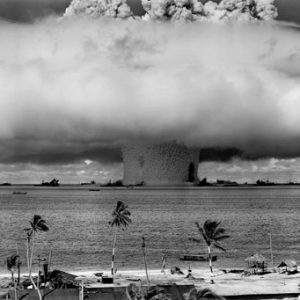 Baker Nuclear Test
Baker Nuclear Test 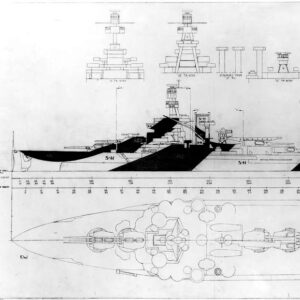 Camouflage Scheme
Camouflage Scheme 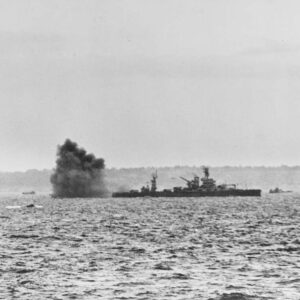 D-Day Support
D-Day Support 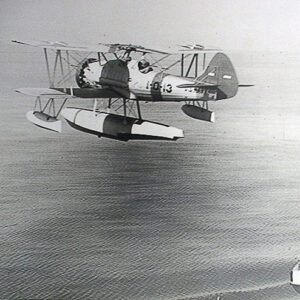 Observation Plane
Observation Plane  Taft Boards Arkansas
Taft Boards Arkansas 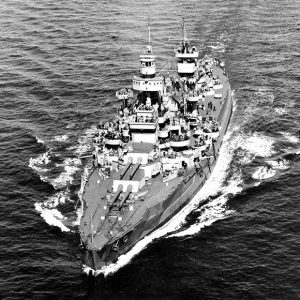 USS Arkansas BB-33
USS Arkansas BB-33 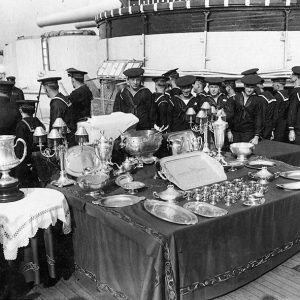 USS Arkansas Silver Service
USS Arkansas Silver Service  USS Arkansas (BB-33) at Panama Canal
USS Arkansas (BB-33) at Panama Canal  USS Arkansas BB-33
USS Arkansas BB-33 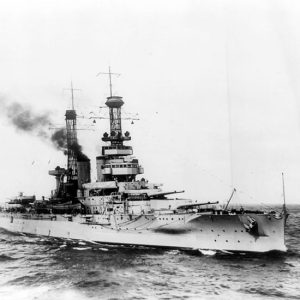 USS Arkansas BB-33
USS Arkansas BB-33 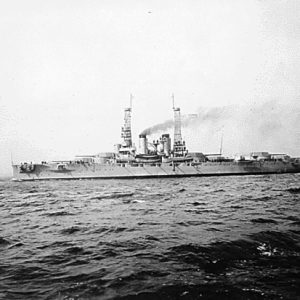 USS Arkansas BB-33
USS Arkansas BB-33  USS Arkansas Menu
USS Arkansas Menu 




The State Legislature appropriated $1,400 for the remainder of cost of the silver set in Act 27 of 1919.